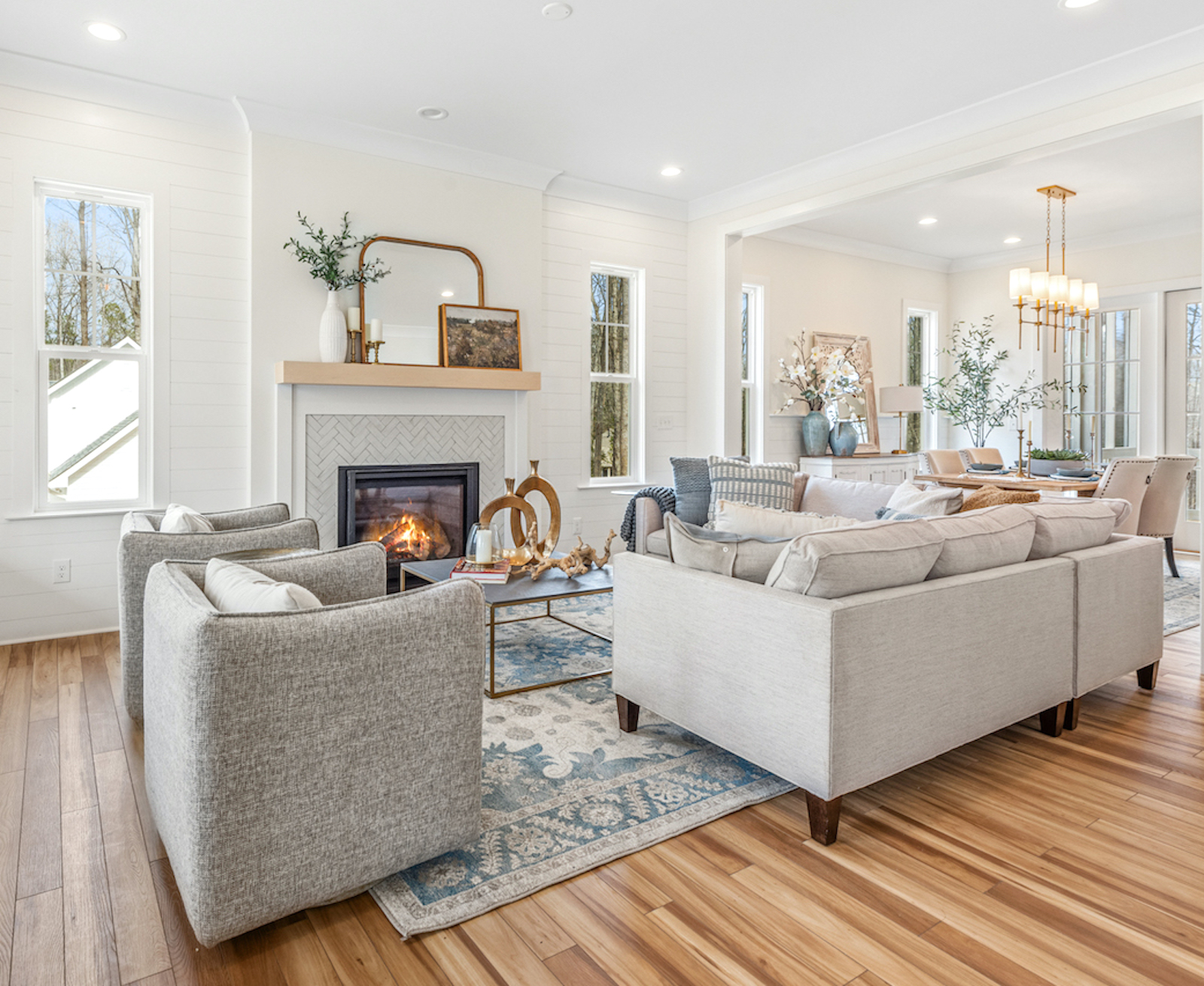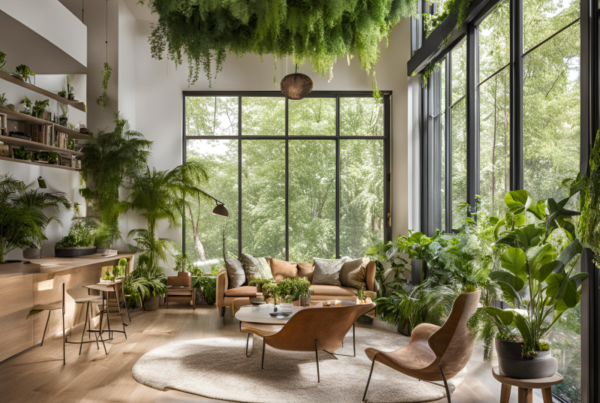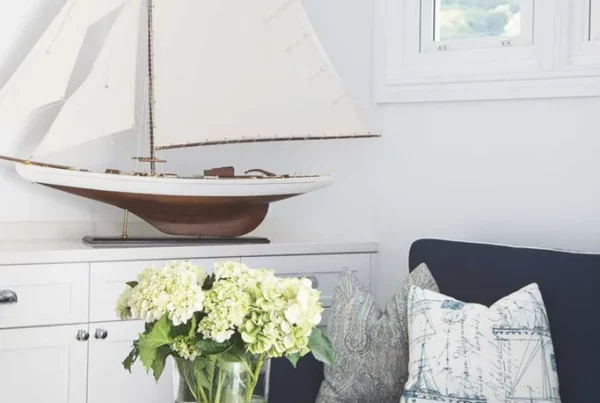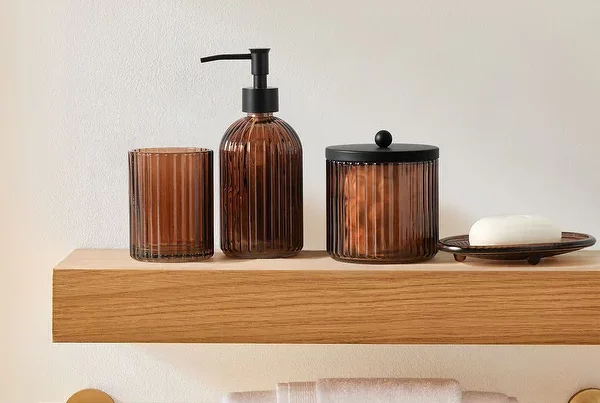Designing a home that balances aesthetic appeal with functional needs can be challenging. This article provides a comprehensive guide to creating a harmonious living space by assessing your lifestyle, identifying essential functionalities, exploring color psychology, and incorporating sustainable practices. By addressing these key areas, you can transform your home into a space that reflects your personal style while meeting practical requirements.
Whether you’re looking to redesign a single room or your entire home, this guide will help you make informed decisions, ensuring each area serves its intended purpose without compromising on design.
Table of Contents
Defining Your Aesthetic Vision for a Dreamy Home
Creating a dreamy home that resonates with your aesthetic vision is one of the most fulfilling aspects of interior design. Your home should be a reflection of you—an embodiment of your style, values, and personality. This process begins with clearly defining your aesthetic vision. Here, we will explore how to clarify your ideals, inspirations, and practical considerations to transform your living space into a sanctuary of beauty and comfort.
Understanding Aesthetic Vision
Aesthetic vision encompasses the themes, motifs, colors, and overall style that inspire you. It’s the framework that guides your design choices, ensuring cohesiveness and intentionality throughout your home. Here are some key elements to consider:
- Style Categories: Familiarize yourself with different interior design styles—whether it’s minimalist, rustic, industrial, or bohemian. Each style has its own characteristics and appeal.
- Color Palette: Harmonizing colors can profoundly affect the mood of your spaces. Select a color palette that evokes the desired emotions and complements your personal style.
- Materials and Textures: Consider how various materials (wood, metal, fabric) and textures (smooth, rough, soft) can be incorporated to add depth and interest to your design.
Discovering Your Inspiration
Finding inspiration is crucial to shaping your aesthetic vision. Reflect on places, experiences, and artworks that resonate with you. Here are some ways to gather inspiration:
- Visual Tools: Utilize platforms like Pinterest or Instagram to create mood boards that collect images reflecting your vision. Use tags like #interiordesign or #homedecor to discover different ideas.
- Nature and Surroundings: Take note of the colors and textures in nature or your day-to-day environment. Nature can be a profound source of inspiration for a calming and cohesive design.
- Art and Culture: Engage with art galleries, museums, or cultural events. The aesthetics found in various artworks can spark creativity and inform your design decisions.
Creating a Vision Board
A vision board acts as a tactile representation of your aesthetic aspirations. By pinning images, fabric swatches, paint samples, and other inspirational items, you can visualize your desired home environment. Here’s how to effectively create one:
- Gather Materials: Collect magazines, fabric samples, and color swatches that represent your style.
- Organize by Themes: Segment your board by spaces (living room, bedroom, etc.) or themes (colors, textures) to maintain clarity in your vision.
- Review and Refine: As your aesthetic evolves, revisit your vision board, updating it with new inspirations that reflect your current preferences while discarding elements that no longer resonate.
Incorporating Functional Needs
While defining your aesthetic vision, considering the functional needs of your home is essential. Balancing beauty with functionality ensures that your dreamy home is not only visually appealing but also practical and comfortable. In our next section, we will delve into how to identify functional needs for every space, ensuring every corner of your home serves a purpose while maintaining the aesthetic you desire.
By establishing a clear aesthetic vision, you pave the way for a beautifully curated living space that feels uniquely yours. This journey allows for creative expression and ultimately transforms your home into a dream sanctuary.
Identifying Functional Needs for Every Space
Every home is a canvas, but to turn it into your masterpiece, understanding the functional needs of each space is essential. Each area of your home serves a unique purpose, and recognizing these functionalities can guide you in making design decisions that not only enhance aesthetics but also improve functionality and livability. This section delves into the various aspects that help you identify the functional needs for every space in your home.
Assessing Your Lifestyle and Daily Activities
The first step in identifying your home’s functional needs is to evaluate your lifestyle. Reflect on your daily activities and how you use each area of your home. Consider the following aspects:
- Family Dynamics: Are there children or pets in your home? If so, you may require spaces that allow for flexibility or playfulness.
- Frequency of Use: How often do you use particular spaces, like dining areas or home offices? This will dictate how you furnish and design these spaces.
- Work from Home Needs: If you work from home, assess the need for a dedicated office space versus sharing a multi-functional area.
Understanding these lifestyle components will provide a solid foundation for determining the needs of each space. For instance, a family that hosts gatherings frequently may prioritize an open-concept living area equipped for entertainment.
Evaluating Space Limitations and Possibilities
Each room has its inherent limitations, be it size, layout, or architectural features. A thorough evaluation of these factors can significantly influence design choices. Here’s how to assess these limitations:
- Room Dimensions: Measure the square footage and take note of irregular shapes, which may require custom furniture.
- Traffic Flow: Identify how people move through spaces to ensure accessibility and avoid clutter. A well-planned layout can enhance both functionality and comfort.
- Natural Light: Take into account the amount of natural light entering the space; this can impact both the mood and the practical use of the area.
By understanding the physical characteristics of your space, you can make informed decisions about how best to use it. For example, a small apartment may prioritize multifunctional furniture to maximize utility.
Identifying Specific Functional Requirements
After assessing your lifestyle and evaluating limitations, it’s time to pinpoint specific functional requirements for each space. Here are some key areas to consider:
- Storage Solutions: Determine what items need to be stored in each area and consider built-in shelving or multifunctional furniture that can serve dual purposes.
- Seating Arrangements: Decide on the number of seats required for your typical gatherings, and think about the style and comfort you desire.
- Technology Integration: Identify your tech needs such as entertainment systems, Wi-Fi access, and work-from-home setups that may affect furniture layout.
For instance, a family room may need ample seating and integrated technology, while a bedroom might require thoughtful storage solutions to keep it uncluttered and serene.
Incorporating the Principles of Universal Design
As you identify functional needs, consider incorporating the principles of universal design. This approach ensures that spaces are accessible and usable for everyone, regardless of age or ability. Some strategies include:
- Wide Doorways: Ensure doorways are wide enough to accommodate wheelchairs or mobility devices.
- Lever Handles: Opt for lever-style door handles which are easier to operate than traditional knobs.
- Non-slip Flooring: Choose flooring materials that reduce the risk of slipping, particularly in areas like kitchens and bathrooms.
Adopting universal design principles not only enhances the usability of your home for its current occupants but also increases its appeal for future buyers, adding long-term value.
Final Thoughts on Functional Needs
Ultimately, identifying the functional needs for every space requires a balance of assessing personal lifestyle, evaluating physical spaces, and planning for practical requirements. This thoughtful approach to design will lead to a home that feels comfortable and tailored to your unique needs.
Next, we will explore the color psychology and how specific palettes can enhance the moods of different spaces within your home, aligning perfectly with the functional needs we’ve identified.
Exploring Color Psychology for Mood Enhancement
Color psychology is an intriguing field that delves into how colors influence our emotions, behaviors, and overall well-being. This knowledge can be particularly beneficial when designing spaces within your home. By understanding the psychological impact of different colors, you can create environments that enhance mood, promote relaxation, or invigorate motivation. In this section, we will explore various colors, their psychological associations, and practical applications for mood enhancement in your home.
The Emotional Influence of Colors
Colors evoke emotions and can significantly impact how we feel within a space. Here’s a breakdown of some key colors and their associated psychological effects:
- Blue: Often associated with tranquility and calmness, blue hues can create a serene atmosphere, making them ideal for bedrooms or relaxation areas.
- Green: Symbolizing nature and renewal, green shades promote feelings of peace and harmony. They are perfect for spaces where you wish to foster creativity or relaxation, such as home offices or living rooms.
- Yellow: This vibrant color stimulates positivity and energy. Used in moderation, yellow can brighten up a kitchen or dining area, encouraging social interaction and a cheerful ambiance.
- Red: Strong and attention-grabbing, red can evoke passion and excitement. It is best used in areas where you want to stimulate energy, such as workout rooms or dining rooms for lively gatherings.
- Purple: A color of luxury and creativity, purple can spark imagination and inspiration. It’s an excellent choice for spaces like art studios or reading nooks.
Practical Applications of Color Psychology
Now that we understand the emotional impact of colors, how can we effectively incorporate this knowledge into our home design? Here are some practical tips:
- Create Zones: Use color to define different zones within an open space. For example, painting a home office area in calming blues can help signal a shift to a focused work environment, while warmer tones can encourage social interaction in the entertainment area.
- Accent Colors: Consider using bold colors as accent walls or highlights in decorative accessories. This can infuse energy into a space without overwhelming it with intense shades.
- Layering Colors: Pair colors thoughtfully by using lighter shades to create an airy feel, while deeper hues can add warmth and depth. For example, a room with soft greens and deeper olive accents can feel both fresh and nurturing.
- Incorporate Natural Light: The perception of color can change dramatically based on light. Always test colors in different lighting conditions to see how they affect the overall mood of the room.
A Mindful Approach to Color Selection
Choosing colors for your home is a deeply personal experience. To make decisions that resonate with your emotional needs, consider these strategies:
- Reflect on Your Lifestyle: Assess how you want to feel in each space. Do you seek calmness in your bedroom? Or perhaps energizing vibes in your creative space?
- Experiment with Samples: Before committing to a color, try samples on the walls. Observe how each color changes throughout the day and at different times.
- Incorporate Personal Meaning: Include colors that personally resonate with you or remind you of fond memories. This creates an emotional connection, making your home feel more inviting.
Conclusion with a Call to Action
Incorporating color psychology into your home design can lead to a more harmonious living environment that boosts your mood and enhances your daily life. By understanding the emotional significance of colors and applying them mindfully, you can transform your home into a space that reflects your needs and encourages positivity.
For further exploration into how colors can uplift your space, consider consulting resources such as Color Psychology for in-depth studies and applications.
Incorporating Sustainable Design Practices for a Modern Touch
As we move towards a more eco-conscious society, sustainable design practices have become a cornerstone of modern interior design. Integrating these principles not only supports the environment but also contributes to the aesthetic and functional value of a home. This section will delve into various strategies to incorporate sustainability into your design plans while maintaining a modern flair.
Understanding Sustainable Design
Sustainable design refers to creating spaces that are environmentally responsible and resource-efficient throughout their life cycle. This includes everything from site selection and building materials to energy consumption and waste management. By choosing to embrace sustainable practices, homeowners can significantly reduce their carbon footprint and promote a healthier living environment.
Selecting Eco-Friendly Materials
One of the most impactful ways to integrate sustainable design is through the selection of eco-friendly materials. Here are key options:
- Bamboo: A rapidly renewable resource, bamboo is not only durable but also stylish, making it an excellent choice for flooring, cabinetry, and furnishings.
- Recycled Materials: Opt for products made from reclaimed wood or recycled metals. These materials add character to your space while minimizing waste.
- Low-VOC Paints: Traditional paints release volatile organic compounds (VOCs) that can harm indoor air quality. Choosing low-VOC or natural paints ensures a healthier home environment.
- Natural Textiles: Use organic cotton, linen, or hemp for upholstery and curtains. These materials are sustainable and often free from harmful chemicals.
Energy Efficiency: A Modern Essential
Incorporating energy-efficient solutions is vital for both sustainability and modern design. Some effective strategies include:
- Smart Home Technology: Install smart thermostats, energy-efficient lighting systems, and energy monitoring devices. These tools help manage energy consumption efficiently.
- High-Performance Windows: Invest in triple-glazed or low-emissivity windows, which reduce heat loss and keep energy costs down while ensuring your modern space remains visually appealing.
- Renewable Energy Sources: Consider adding solar panels or wind turbines if feasible. This not only enhances sustainability but can also be an excellent conversation starter as part of your design.
Design Options for Indoor Greenery
Bringing the outdoors in is a growing trend that perfectly aligns with sustainable design. Biophilic design incorporates natural elements, which can improve mental well-being and indoor air quality. Here’s how to add this into your modern space:
- Indoor Plants: Use low-maintenance houseplants like snake plants or pothos that purify the air and thrive in various lighting conditions.
- Vertical Gardens: Consider a living wall for small spaces. These vertical gardens provide a lush aesthetic without taking up floor space.
- Natural Light Maximization: Design your layout to maximize natural light, using larger windows or skylights, which can reduce reliance on artificial lighting.
Minimalism Meets Sustainability
Sustainable design aligns perfectly with the minimalist aesthetic. By focusing on functionality and quality over quantity, you can create a space that is both modern and eco-friendly. Key principles include:
- Functional Furniture: Choose multifunctional pieces that serve several purposes, such as a coffee table with storage or a sofa bed.
- Quality Over Quantity: Invest in fewer, high-quality items that will last longer, reducing the need for replacements.
- Decluttering: Regularly assess what you own and donate or recycle items that no longer serve a purpose in your home.
Embracing Local and Artisan Craftsmanship
Supporting local artisans not only boosts the economy but also often involves the use of sustainable practices. When selecting decor and furnishings, consider:
- Handcrafted Items: Pieces made by local artisans often use sustainable materials and techniques, creating unique character in your home.
- Community Sourcing: Find furniture and decor from local markets or fairs to reduce transportation emissions and promote local craftsmanship.
Incorporating these sustainable design practices ensures a modern touch to your home while being friendly to the planet. As you continue to design your space, remember that sustainability and style can coexist beautifully. For more insights on sustainable living, consider visiting the Green Building Advisor, a resource offering a plethora of information on eco-friendly living. Creating a personalized and functional home design starts with defining your aesthetic vision and understanding the unique needs of your space. Begin by exploring design trends and gathering inspiration from nature, art, and culture. Utilize a vision board to organize your ideas, ensuring every area reflects your style while serving its intended purpose. Consider your lifestyle, the functionality of each room, and the integration of elements like storage solutions, seating arrangements, and technology to enhance both beauty and practicality.
Incorporating sustainable design practices is also vital for a modern and eco-friendly living space. Choose eco-friendly materials, such as bamboo and low-VOC paints, and implement energy-efficient solutions like smart home technology and high-performance windows. Embrace biophilic design by adding indoor plants for improved air quality and aesthetics, and prioritize minimalism by selecting functional furniture and reducing clutter. By merging style with sustainability, you can create a home that is not only visually appealing but also environmentally responsible.





